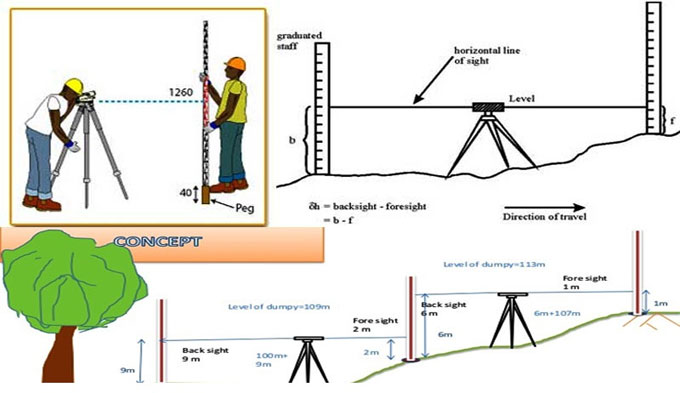
Everything You Need to Know About Leveling
What is Leveling
Leveling is the method of determining the elevations of points on the earth?s surface relative to a starting point. This starting point is generally taken as the sea level and is called the ?Zero point.? In this work, geodetic measurements are carried out to create a grid of sorts, to outline the topography of a region.
Why do we need leveling
The survey leveling results are generally used in construction, research, and other purposes. In construction engineering, leveling is a vital part of the site survey process. It is used to plan, construct, and maintain engineering structures, railroads, highways, and so on.
Types of Leveling
There are several types of leveling methods, such as:
1. Geometric
2. Trigonometric
3. Barometric
4. Mechanical
5. Hydrostatic
The geometric method of leveling is the most common method used in construction site surveys, and we will mention only that today.
However, depending upon the type of instruments used, leveling methods can be distributed in three types, as follows:
1. Barometric leveling
A barometer is used in this kind of leveling to determine the relative point heights in a region. This makes use of the fact that the ground height difference between two places will be proportional to the difference in the barometer gauge, given the same weather.
However, depending upon the weather, the air quality, and even the time of day, the barometer reading can change in the same place. This is in accordance to the erratic nature of the atmospheric nature. Therefore, this method is highly inaccurate and unreliable. So, only very high elevation differences are measured using this method, and only if the surveyor doesn?t know the exact height of a nearby point. In construction surveys, we do not use barometric leveling.
2. Indirect leveling
This is basically the trigonometric leveling done using no specific kind of instruments but using sheer mathematics.
In this method, the difference of vertical levels between two points are figured out using the distance between those points and the vertical angle measured in the field.
The indirect leveling method is often used in cartography (making maps), where a leveling staff is used to figure out both the elevation difference and the distance between points, using a slightly modified version of this method, called stadia leveling.
3. Spirit leveling
This is perhaps the most precise non-electronic method to determining the levels of any points within visible distance. The method gets its name from the devices that are used ? a spirit level (or a level vial) and a telescope.
The spirit level helps the surveyor to find out the perfectly horizontal plane at the reference level point, meaning the plane that is precisely perpendicular to gravitational force at the point. The vertical difference between these horizontal lines are then calculated using trigonometric functions.
By far, the direct or spirit leveling method is the most precise, and that is why it is mostly used in the construction surveys. Most of the capable engineers should be able to perform a spirit leveling at any point on earth.
Instruments required for leveling
a. Spirit level
A spirit level or a bubble level is a device to find out if a surface is perfectly horizontal or not. In leveling survey work, a tilting level, dumpy level, or automatic level is used. It has a spirit level mounted on a telescope (perhaps 30 power) with cross-hairs, itself mounted on a tripod.
b. Leveling Staff
Also called a leveling rod, a leveling staff is a wooden or aluminum rod, that is used in conjunction with a spirit level to determine the vertical differences between two points.
The surveyor performing the leveling reads the rod through the crosshairs on the telescope mounted on the combined device.
Some important lingo in leveling
1. Level surface
2. Level line
3. Horizontal plane
4. Horizontal line
5. Vertical line
6. Datum
7. Elevation
8. Vertical angle
9. Mean sea level
10. Bench mark


